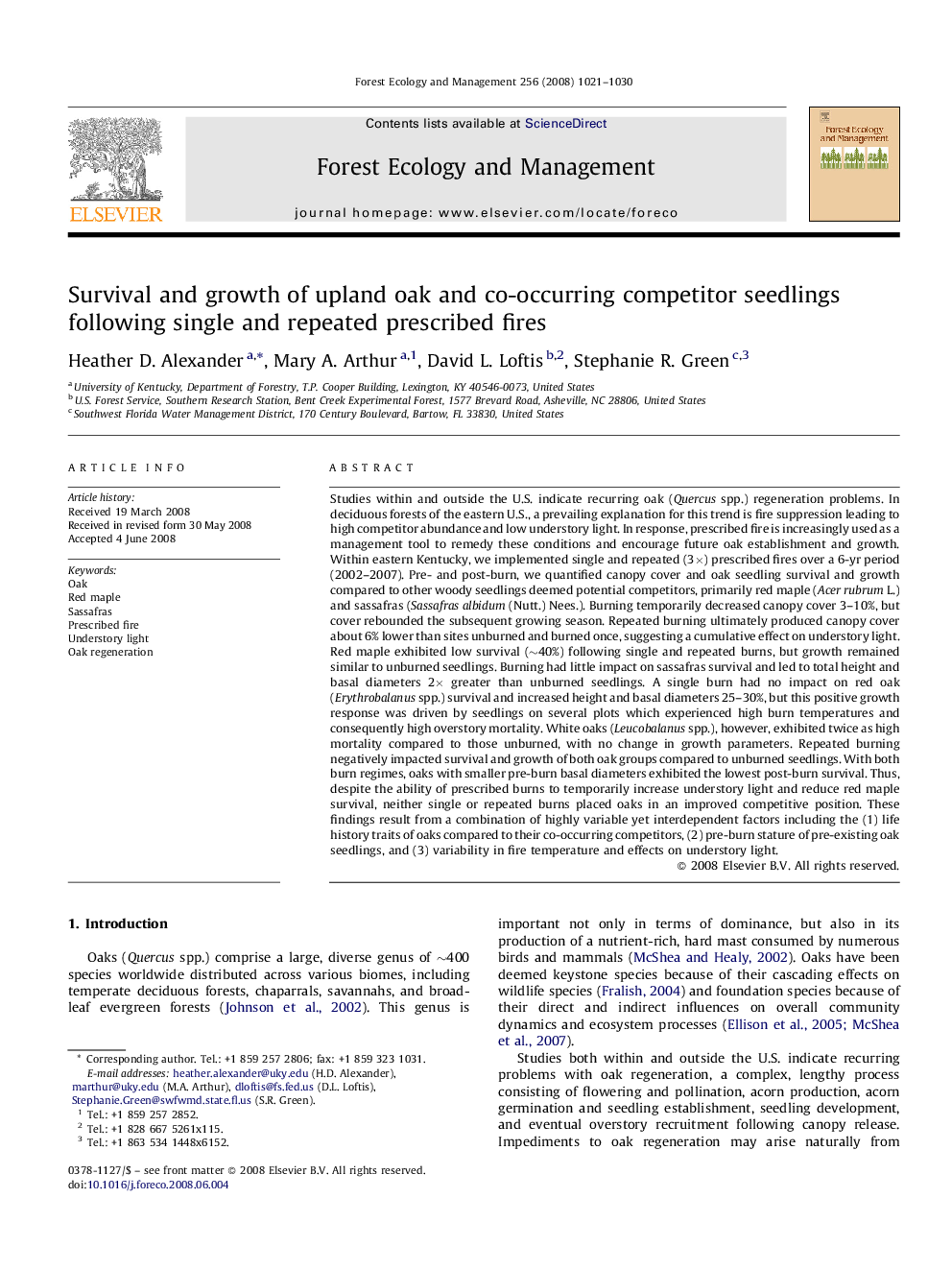| کد مقاله | کد نشریه | سال انتشار | مقاله انگلیسی | نسخه تمام متن |
|---|---|---|---|---|
| 88792 | 159320 | 2008 | 10 صفحه PDF | دانلود رایگان |

Studies within and outside the U.S. indicate recurring oak (Quercus spp.) regeneration problems. In deciduous forests of the eastern U.S., a prevailing explanation for this trend is fire suppression leading to high competitor abundance and low understory light. In response, prescribed fire is increasingly used as a management tool to remedy these conditions and encourage future oak establishment and growth. Within eastern Kentucky, we implemented single and repeated (3×) prescribed fires over a 6-yr period (2002–2007). Pre- and post-burn, we quantified canopy cover and oak seedling survival and growth compared to other woody seedlings deemed potential competitors, primarily red maple (Acer rubrum L.) and sassafras (Sassafras albidum (Nutt.) Nees.). Burning temporarily decreased canopy cover 3–10%, but cover rebounded the subsequent growing season. Repeated burning ultimately produced canopy cover about 6% lower than sites unburned and burned once, suggesting a cumulative effect on understory light. Red maple exhibited low survival (∼40%) following single and repeated burns, but growth remained similar to unburned seedlings. Burning had little impact on sassafras survival and led to total height and basal diameters 2× greater than unburned seedlings. A single burn had no impact on red oak (Erythrobalanus spp.) survival and increased height and basal diameters 25–30%, but this positive growth response was driven by seedlings on several plots which experienced high burn temperatures and consequently high overstory mortality. White oaks (Leucobalanus spp.), however, exhibited twice as high mortality compared to those unburned, with no change in growth parameters. Repeated burning negatively impacted survival and growth of both oak groups compared to unburned seedlings. With both burn regimes, oaks with smaller pre-burn basal diameters exhibited the lowest post-burn survival. Thus, despite the ability of prescribed burns to temporarily increase understory light and reduce red maple survival, neither single or repeated burns placed oaks in an improved competitive position. These findings result from a combination of highly variable yet interdependent factors including the (1) life history traits of oaks compared to their co-occurring competitors, (2) pre-burn stature of pre-existing oak seedlings, and (3) variability in fire temperature and effects on understory light.
Journal: Forest Ecology and Management - Volume 256, Issue 5, 20 August 2008, Pages 1021–1030